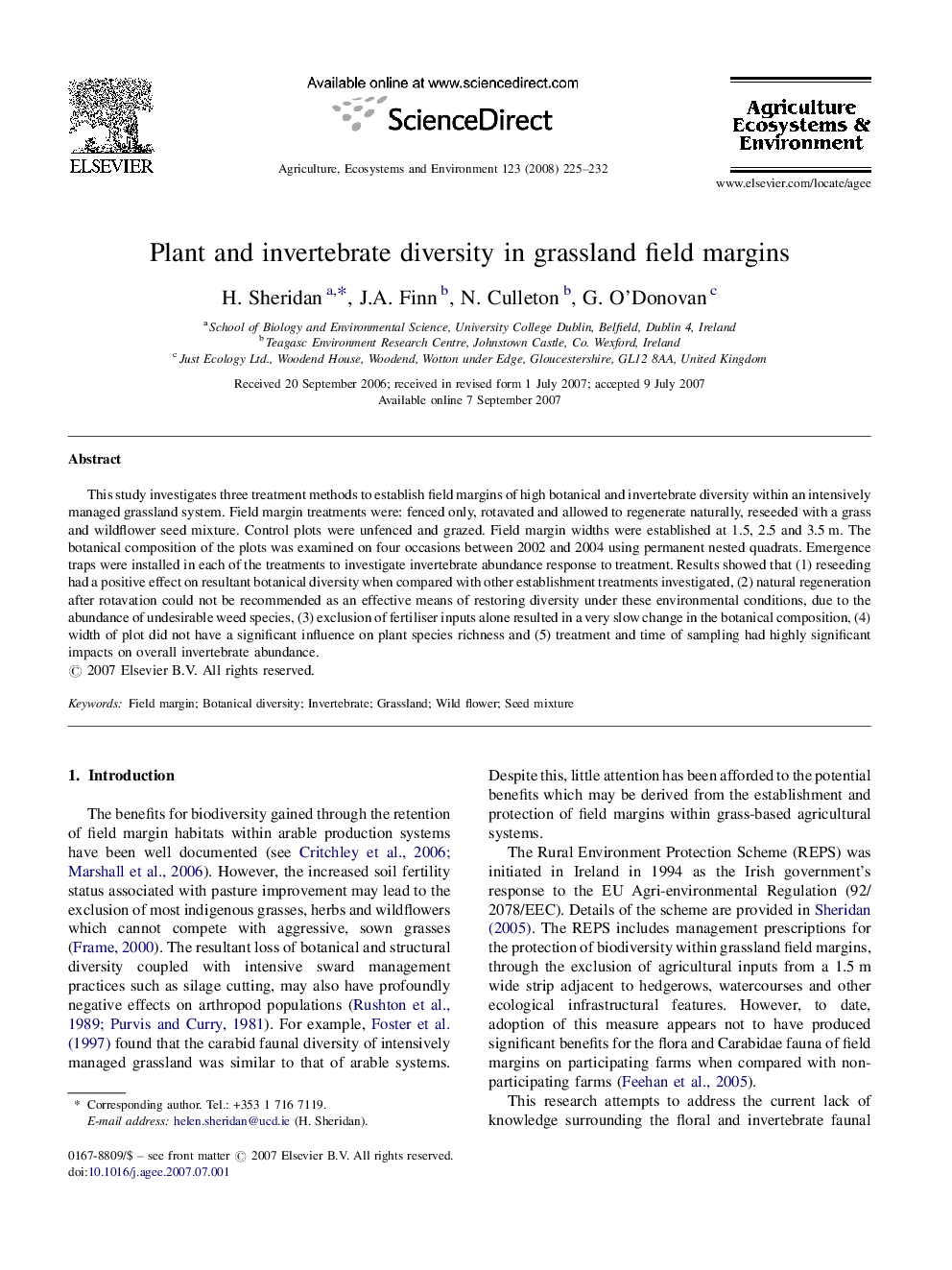| Article ID | Journal | Published Year | Pages | File Type |
|---|---|---|---|---|
| 2415778 | Agriculture, Ecosystems & Environment | 2008 | 8 Pages |
This study investigates three treatment methods to establish field margins of high botanical and invertebrate diversity within an intensively managed grassland system. Field margin treatments were: fenced only, rotavated and allowed to regenerate naturally, reseeded with a grass and wildflower seed mixture. Control plots were unfenced and grazed. Field margin widths were established at 1.5, 2.5 and 3.5 m. The botanical composition of the plots was examined on four occasions between 2002 and 2004 using permanent nested quadrats. Emergence traps were installed in each of the treatments to investigate invertebrate abundance response to treatment. Results showed that (1) reseeding had a positive effect on resultant botanical diversity when compared with other establishment treatments investigated, (2) natural regeneration after rotavation could not be recommended as an effective means of restoring diversity under these environmental conditions, due to the abundance of undesirable weed species, (3) exclusion of fertiliser inputs alone resulted in a very slow change in the botanical composition, (4) width of plot did not have a significant influence on plant species richness and (5) treatment and time of sampling had highly significant impacts on overall invertebrate abundance.
